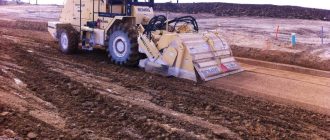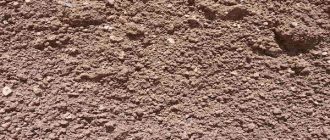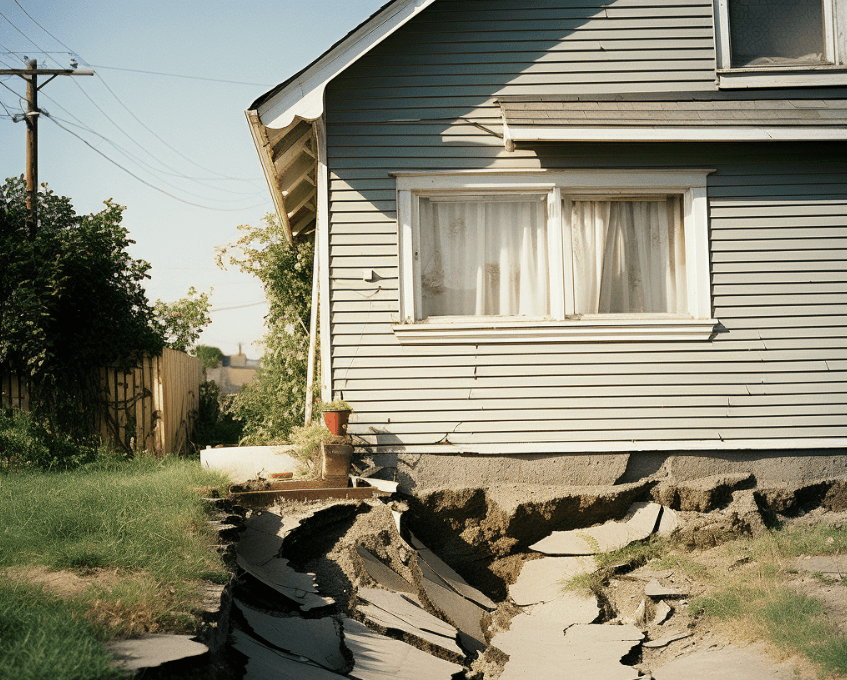
What is an Expansive (Shrink-Swell) Soil?
An expansive soil, also known as a shrink-swell soil, is a type of soil that expands when it absorbs water and shrinks when it dries out. This unique characteristic can cause significant problems for structures built on or near these types of soils.
The causes of expansive soils can vary depending on the region, climate, and geological factors. One common cause is the presence of clay minerals in the soil, which have the ability to absorb water and increase in volume. Additionally, fluctuations in moisture content due to changes in weather patterns can also contribute to the expansion and contraction of the soil.
Expansive soils can pose serious challenges for construction projects and infrastructure. The repeated swelling and shrinking of the soil can exert significant pressure on foundations, leading to cracks, shifts, and even structural failure. This can result in costly repairs and compromise the integrity of buildings.
However, there are solutions available to mitigate the effects of expansive soils. One common approach is to design and construct foundations that can accommodate the movement of the soil. This may involve using flexible materials or incorporating techniques such as deep soil stabilization or moisture control measures.
Understanding the causes and solutions for expansive soils is crucial for engineers, architects, and construction professionals to ensure the long-term stability and safety of structures. By implementing proper engineering practices and taking into account the unique properties of expansive soils, it is possible to mitigate the risks associated with these challenging soil types.
What are Expansive Soils and Why Do They Shrink and Swell?
Expansive soils, also known as shrink-swell soils, are a type of soil that has the ability to significantly change its volume in response to changes in moisture content. These soils are commonly found in regions with dry climates and clay-rich soils.
So, what exactly is an expansive soil? An expansive soil is a type of soil that contains a high percentage of clay minerals. Clay minerals have the unique property of being able to absorb and hold water molecules within their thin layers. When these clay minerals come into contact with water, they swell and increase in volume. Conversely, when the moisture content of the soil decreases, the clay particles shrink, leading to a decrease in soil volume.
The shrink-swell behavior of expansive soils can cause significant problems for structures built on top of them. When the soil absorbs water and swells, it exerts an upward hydrostatic pressure on any structures above it. This can lead to cracks in foundations, walls, and other structural components. On the other hand, during periods of dry weather, when the soil dries out and shrinks, it can cause the ground to sink, creating additional stress on structures.
There are several factors that contribute to the shrink-swell behavior of expansive soils. One of the main factors is the presence of clay minerals in the soil. As mentioned earlier, clay minerals have the ability to absorb and hold water, leading to volume changes. Other factors include changes in moisture content due to seasonal weather patterns, poor drainage, and improper construction practices.
To mitigate the effects of expansive soils, various solutions can be implemented. These can include proper foundation design, moisture control measures such as drainage systems, and the use of moisture barriers. Additionally, regular monitoring and maintenance of structures built on expansive soils is crucial to detect and address any issues that may arise due to soil movement.
In conclusion, expansive soils are a type of soil that can significantly change in volume due to changes in moisture content. Their shrink-swell behavior can cause structural damage and necessitate proper mitigation measures. Understanding the causes and solutions for expansive soils is essential for building safe and stable structures in areas prone to this phenomenon.
Common Signs of Expansive Soil Problems
Understanding what expansive soil is and how it can affect your property is crucial for homeowners and builders. Expansive soil, also known as shrink-swell soil, is a type of soil that has the ability to change its volume significantly with changes in moisture content. This can lead to various problems and damage to structures.
Here are some common signs that indicate the presence of expansive soil problems:
- Cracked Foundations: One of the most obvious signs of expansive soil problems is the appearance of cracks in the foundation of buildings. These cracks are typically wider at the top and narrower at the bottom, resembling a stair-step pattern. It is important to address these cracks promptly, as they can worsen over time and compromise the structural integrity of the building.
- Uneven Floors: Expansive soil can cause the ground underneath a building to shift and heave, resulting in uneven floors. This can be observed as slopes or dips in the floors, making it difficult to properly place furniture or walk without stumbling.
- Sticking Doors and Windows: Another sign of expansive soil problems is doors and windows that become difficult to open or close. As the soil expands and contracts, it can put pressure on the building’s frame, causing doors and windows to warp or become misaligned.
- Jammed Plumbing: Expansive soil can also affect the plumbing of a building. Shifting soil can cause pipes to bend or break, resulting in leaks and water damage. If you notice recurring plumbing issues, it may be a sign of underlying soil problems.
- Cracked or Uneven Walls: Expansive soil can cause walls to crack or become uneven. These cracks can appear both vertically and horizontally, and they may be more noticeable near corners or openings.
If you notice any of these signs, it is important to consult with a professional who specializes in dealing with expansive soil problems. They can assess the situation and provide appropriate solutions to prevent further damage to your property.
Climate Conditions that Contribute to Soil Expansion
Understanding the causes of soil expansion is crucial in managing and preventing the potential damage it can cause to buildings and infrastructure. One significant factor that contributes to soil expansion is climate conditions.
Soil is a dynamic system that constantly interacts with its environment. It expands and contracts in response to changes in moisture content. This phenomenon, known as shrink-swell, can be attributed to several climate conditions:
- Heavy rainfall: When there is excessive rainfall, the soil absorbs water and swells. The high moisture content causes the soil particles to expand, leading to soil expansion.
- Drought: On the other hand, prolonged periods of drought can cause the soil to dry out and shrink. The absence of moisture causes the soil particles to contract, resulting in soil shrinkage.
- Fluctuating moisture levels: Soil expansion can also occur in regions with fluctuating moisture levels. If the soil experiences alternating wet and dry periods, it will go through a cycle of swelling and shrinking.
In addition to these climate conditions, it is important to note that different soil types have varying degrees of susceptibility to shrink-swell behavior. Clays, for example, are highly reactive and are more prone to significant expansion and contraction compared to other soil types.
Understanding the climate conditions that contribute to soil expansion is the first step in managing and mitigating the risks associated with shrink-swell soils. By implementing appropriate measures, such as proper foundation design and moisture control, the potential damage caused by soil expansion can be minimized.
Geological Factors that Influence Soil Swelling
Expansive soil refers to soil that has a high potential to shrink and swell due to changes in moisture content. This can cause significant damage to structures built on top of it. In order to understand why certain soils exhibit this behavior, it is important to consider the geological factors that influence soil swelling.
What is an expansive soil?
An expansive soil is characterized by its ability to absorb water and expand, as well as release water and shrink. This cycle of swelling and shrinking is mainly influenced by the following geological factors:
- Clay mineral content: Soils with a higher clay content are more prone to swelling and shrinking due to the presence of clay particles. Clay minerals have a unique structure that allows them to attract and retain water molecules, leading to increased volume and swelling.
- Particle size distribution: The distribution of different particle sizes in soil also plays a role in its swelling potential. Soils with a high proportion of fine particles, such as silt and clay, tend to be more expansive. This is because these smaller particles have a larger surface area, which enhances water absorption and swelling.
- Mineralogy: Apart from clay minerals, certain minerals found in soil can also contribute to its swelling behavior. For example, the presence of minerals like montmorillonite and smectite in clay soils can increase their swelling potential.
- Soil structure: The arrangement of soil particles into aggregates or clumps affects its permeability and ability to hold water. Soils with a well-developed clay or silt structure are generally more prone to swelling.
- Moisture content: The amount of water present in the soil significantly influences its swelling potential. Expansive soils tend to experience greater swelling when exposed to moisture, and shrink when water is lost through evaporation or drainage.
- Climate: Climate conditions, especially those with distinct wet and dry seasons, can exacerbate soil swelling. Alternating cycles of wetting and drying of the soil can promote continued expansion and contraction, leading to increased damage to structures.
Understanding the geological factors that contribute to soil swelling is crucial for engineers, architects, and builders when designing and constructing structures on expansive soils. Proper site investigation, soil testing, and implementing appropriate soil stabilization techniques can help mitigate the potential risks associated with expansive soils.
The Impact of Moisture on Soil Shrinkage and Expansion
Understanding the effects of moisture on soil shrinkage and expansion is crucial for managing the challenges associated with expansive (shrink-swell) soils. Shrink-swell soils are those that undergo substantial volume changes in response to changes in moisture content.
Soil, being a complex mixture of minerals, organic matter, and water, is highly sensitive to moisture. When the moisture content in the soil changes, it can lead to expansions or contractions in the soil’s volume. This process is primarily driven by the presence of clay minerals, which have the ability to absorb and release water more readily than other soil components.
What makes expansive soils particularly problematic is their ability to undergo significant changes in volume. When the soil becomes saturated with moisture, the clay minerals can absorb water and expand, causing the soil to swell. Conversely, when the moisture content decreases, the clay minerals release water and the soil shrinks.
The shrinkage and expansion of soil can have detrimental effects on structures and foundations. The movement of the soil can lead to cracks in walls, floors, and foundations, and can compromise the stability of structures. Understanding the mechanisms behind soil shrinkage and expansion is essential for developing effective solutions to mitigate these issues.
- Preventing Moisture Infiltration: One approach to managing expansive soils is to limit the amount of moisture that comes into contact with the soil. Proper drainage systems, including gutters, downspouts, and grading, can help redirect water away from the foundation and prevent excessive moisture infiltration.
- Controlling Moisture Content: Another method involves controlling the soil moisture content through irrigation and drainage systems. By maintaining a consistent moisture level in the soil, the risk of significant volume changes can be minimized.
- Chemical Treatments: Chemical treatments, such as the addition of lime or cement, can help stabilize the soil and reduce its susceptibility to shrinkage and expansion. These treatments can modify the clay minerals’ ability to absorb and release water, making the soil less prone to drastic volume changes.
Ultimately, understanding the impact of moisture on soil shrinkage and expansion is critical for effectively managing expansive soils. By implementing appropriate mitigation measures based on a comprehensive understanding of soil behavior, the risks associated with these types of soils can be minimized, ensuring the long-term stability of structures and foundations.
How Soil Composition Affects its Expansiveness
An expansive, or shrink-swell, soil is a type of soil that undergoes significant volume changes with variations in moisture content. The shrinkage and swelling of these soils can cause damage to structures built upon them, such as roads, buildings, and pipelines. Understanding the factors that contribute to the expansiveness of soil is crucial for developing effective solutions to mitigate its effects.
One of the key factors that influences the expansiveness of soil is its composition. Different types of soil have varying amounts of clay, silt, and sand particles, which directly impact their behavior when exposed to moisture.
Soils with high clay content are particularly prone to expansive behavior. This is because clay particles have a high affinity for water, causing them to absorb moisture and swell. Conversely, when the moisture content decreases, the clay particles shrink and contract, leading to soil shrinkage.
The presence of silt can also contribute to soil expansiveness. While not as significant as clay, silt particles can retain water and undergo some degree of swelling and shrinkage.
In contrast, soils with a high sand content tend to have better drainage and lower expansiveness. Sand particles are larger and have larger pore spaces between them, allowing water to pass through more easily. This prevents the retention of excessive moisture, reducing the potential for expansive behavior.
It is important to note that soil composition alone is not the sole determining factor of soil expansiveness. Other factors, such as the mineralogy of the clay, organic matter content, and soil structure, also play a role in the overall behavior of shrink-swell soils.
Understanding the relationship between soil composition and its expansiveness is crucial for developing effective strategies to manage and mitigate the potential damage caused by these types of soils. By considering soil composition as well as other relevant factors, engineers and builders can make informed decisions when designing and constructing structures on expansive soils.
Common Construction Issues Caused by Expansive Soils
Expansive soils, also known as shrink-swell soils, can cause a range of construction issues due to their ability to significantly expand and contract with changes in moisture content. These issues can lead to costly repairs, structural damage, and even the failure of buildings and infrastructure.
Here are some of the common construction issues caused by expansive soils:
- Foundation Movement: Expansive soils can exert considerable pressure on foundations, causing them to shift, crack, or heave. This movement can lead to structural instability and compromise the integrity of the entire building.
- Cracked Walls and Floors: As the ground expands and contracts, it can cause walls and floors to crack. These cracks may appear in both masonry and concrete structures, compromising their strength and aesthetics.
- Damage to Plumbing and Utilities: The movement of expansive soils can place stress on plumbing pipes and utility lines, leading to leaks, breaks, and blockages. This can result in costly repairs and disruptions to water supply and drainage systems.
- Uneven or Misaligned Doors and Windows: When the foundation of a building shifts due to expansive soils, doors and windows may become misaligned or difficult to open and close. This can affect the functionality and security of the building.
- Leaning or Tilting Structures: Expansive soils can cause structures to lean or tilt as the soil beneath them expands or contracts unevenly. This can result in uneven settling and increased risk of structural failure.
- Damage to Pavement and Roads: Shrink-swell soils can cause pavements and roads to crack, buckle, or sink. This can lead to hazardous driving conditions and costly repairs for municipalities.
These common construction issues highlight the importance of understanding the characteristics and behavior of expansive soils during the planning and design stages of construction. Proper site analysis, soil testing, and engineering measures can help mitigate the risks associated with expansive soils and ensure the long-term stability and durability of structures.
Techniques to Identify Expansive Soils Before Construction
Before beginning any construction project, it is important to assess the soil conditions at the site. This is especially crucial when dealing with shrink-swell or expansive soils. Expansive soils are soils that have the potential to increase or decrease in volume significantly due to changes in moisture content.
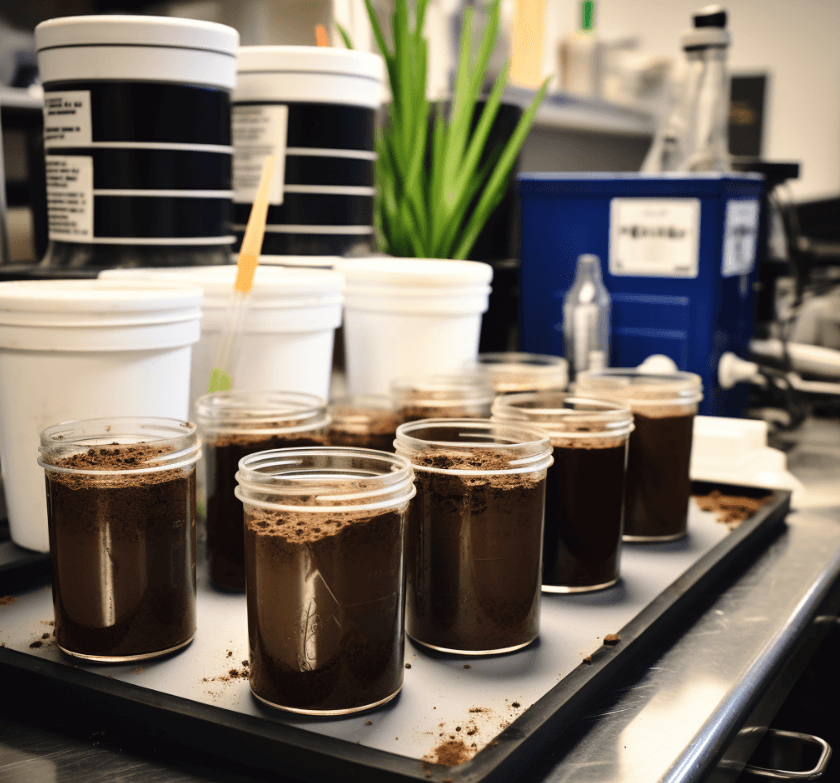
Identifying expansive soils before construction can help prevent costly damage and problems in the future. There are several techniques that can be used to identify the presence of expansive soils:
- Visual Inspection: A visual inspection of the site can provide initial clues about the presence of expansive soils. Look for signs such as cracking in the ground, particularly during dry periods, or areas where the soil appears to be raised or pushed up.
- Field Testing: Several field tests can be performed to assess the properties of the soil. One common test is the ribbon test, where a small sample of soil is wetted and then molded between the fingers. Expansive soils will typically form a ribbon when squeezed. Another test is the pocket penetrometer test, which measures the soil’s compressive strength. Expansive soils generally have a lower compressive strength.
- Laboratory Testing: More detailed laboratory tests can be conducted to determine the soil’s moisture content, plasticity index, and other relevant properties. These tests provide quantitative data that can help assess the potential for soil expansion.
- Geotechnical Investigations: Geotechnical investigations involve drilling boreholes at the construction site and extracting soil samples for analysis. This allows for a more comprehensive understanding of the soil conditions and can help identify the presence of expansive soils.
Once expansive soils are identified, appropriate measures can be taken to mitigate their effects during construction. This may include soil stabilization techniques, such as adding lime or cement to the soil, or implementing proper foundation design practices.
By using these techniques to identify expansive soils before construction, developers and builders can avoid costly damage and ensure the long-term stability and safety of their structures.
Preventative Measures for Building on Expansive Soils
Expansive soils are types of soils that undergo significant changes in volume with changes in moisture content. These changes in volume can cause serious structural damage to buildings and infrastructure. To prevent such damage, it is important to take certain preventative measures when building on expansive soils.
- Site Evaluation: Before construction begins, it is crucial to conduct a thorough site evaluation to determine if the soil is expansive. This may involve soil testing and analysis to assess its shrink-swell potential. This information can help in designing appropriate foundations and determining the best construction techniques for the site.
- Foundation Design: Designing the foundation to prevent damage from expansive soils is essential. This may involve the use of deep, specialized foundations that go below the depth of soil movement or the implementation of a shallow foundation with proper moisture control measures.
- Moisture Control: One of the main causes of soil expansion is changes in moisture content. Implementing proper moisture control measures, such as drainage systems, can help alleviate the effects of expansive soils. This may include using gutters and downspouts to divert water away from the foundation or installing proper grading to ensure water does not accumulate near the building.
- Slope Stabilization: Slope instability can exacerbate the effects of expansive soils. It is important to stabilize any slopes present on the construction site to prevent soil movement and potential damage to the building. This can be done through techniques such as slope reinforcement or stabilization with retaining walls.
- Proper Compaction: Proper soil compaction during construction is crucial to minimize the potential for soil expansion. Compaction techniques should be used to achieve the desired density and stability of the soil. Additionally, avoiding over-excavation and minimizing the disturbance of the soil can help reduce the risk of soil movement.
- Monitoring and Maintenance: Regular monitoring and maintenance of buildings constructed on expansive soils are important to identify any signs of distress or structural damage. This can include cracks in walls or foundations, uneven floors, or doors and windows that do not close properly. Prompt action can help mitigate further damage.
By following these preventative measures, it is possible to minimize the risks associated with building on expansive soils. Consulting with engineers and geotechnical experts is recommended to ensure the design and construction techniques are appropriate for the specific site conditions.
Foundation Repair Options for Existing Structures
When dealing with expansive soil, it is important to understand the potential damage it can cause to a structure’s foundation. Expansive soil, also known as shrink-swell soil, is a type of soil that expands when it absorbs water and shrinks when it dries out. This constant expansion and contraction can lead to significant damage to foundations, resulting in cracks, uneven settling, and even structural failure.
So what options are available for repairing existing structures that have been affected by expansive soil? Here are a few common solutions:
- Foundation Underpinning: This method involves stabilizing the foundation by adding support or reinforcing existing footing. This can be done by installing piers or helical anchors deep into the ground to reach stable soil layers. Underpinning can help transfer the weight of the structure to more solid ground, preventing further damage caused by soil movement.
- Foundation Watering: In some cases, drying out the soil around the foundation can help reduce its expansive nature. This can be achieved by installing a system to water the soil around the foundation, keeping it consistently moist and preventing excessive expansion and contraction.
- Foundation Drainage: Proper drainage is crucial for preventing water accumulation around the foundation. Installing a drainage system, such as French drains or surface drains, can help redirect water away from the foundation, reducing the potential for soil expansion.
- Foundation Crack Repair: If cracks have already formed in the foundation due to expansive soil movement, it is important to repair them promptly. This can be done by injecting epoxy or polyurethane into the cracks to stabilize and seal them, preventing further water infiltration and soil movement.
- Foundation Soil Stabilization: Another option is to stabilize the expansive soil itself. This can be done by adding chemical stabilizers or soil amendments to improve its moisture resistance and reduce its swelling properties.
It is important to note that the appropriate repair method will depend on the extent of the damage, the specific soil conditions, and the recommendations of a qualified foundation engineer or contractor. A thorough evaluation of the situation is crucial to determine the best course of action.
In conclusion, dealing with expansive soil can be challenging, but there are various foundation repair options available for existing structures. From foundation underpinning to crack repair and soil stabilization, these solutions can help mitigate the effects of shrink-swell soil and ensure the long-term stability of the structure.
Effective Drainage Systems for Mitigating Soil Expansion
In order to mitigate the effects of soil expansion, it is important to implement effective drainage systems. Shrink-swell soils are prone to expanding and contracting depending on moisture content, and without proper drainage, this can lead to significant issues such as foundation damage, cracks in buildings, and infrastructure problems.
So what exactly is shrink-swell soil? Shrink-swell soil, also known as expansive soil, is a type of soil that has the ability to increase or decrease in volume due to changes in moisture content. When the soil becomes wet, it expands, and when it dries out, it contracts. This constant expansion and contraction can lead to significant damage to structures built on this type of soil.
One effective way to mitigate the effects of soil expansion is to implement a well-designed drainage system.
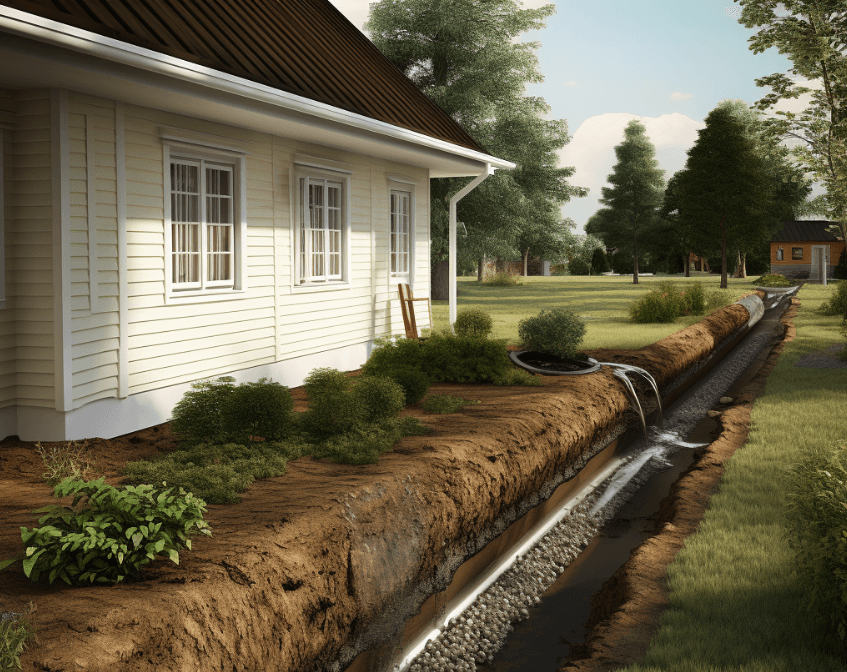
By improving the drainage around and beneath the foundation, excess moisture can be effectively removed, reducing the chances of soil expansion. Here are some key components of an effective drainage system:
- Gutters and Downspouts: Ensure that gutters and downspouts are in good condition and properly divert water away from the foundation. This helps prevent excess water from saturating the soil around the foundation.
- Surface Grading: Properly grade the surface around the foundation to ensure that water flows away from the structure. This helps prevent water accumulation near the foundation, which can contribute to soil expansion.
- French Drains: Install French drains around the foundation to redirect water away from the soil. French drains consist of a perforated pipe surrounded by gravel, which helps collect and disperse water away from the foundation.
- Subsurface Drains: Subsurface drains, such as drain tiles or perforated pipes, can help remove excess moisture from beneath the foundation. These drains are typically installed below the surface to prevent water from accumulating and causing soil expansion.
In addition to these drainage systems, it is also important to regularly monitor and maintain the drainage system to ensure its effectiveness. Regular inspections and maintenance can help identify any issues or blockages that may hinder proper drainage.
In conclusion, effective drainage systems play a crucial role in mitigating the effects of soil expansion. By implementing a well-designed drainage system, excess moisture can be effectively removed, reducing the risk of soil expansion and the associated damages. It is important to assess the specific needs of each site and consult with professionals to ensure the most appropriate drainage system is implemented.
Using Vegetation to Stabilize Expansive Soils
Expansive (shrink-swell) soil is an issue that affects many areas around the world. It can cause significant damage to structures built on top of it, leading to costly repairs and potential safety risks. One effective method of stabilizing expansive soils is by using vegetation.
Vegetation plays a crucial role in stabilizing expansive soils due to its ability to absorb and release moisture. The roots of plants can help regulate the soil moisture content, preventing excessive shrinking or swelling. By maintaining a consistent level of moisture, vegetation can help minimize the changes in soil volume, reducing the potential for damage.
There are different types of vegetation that can be effective in stabilizing expansive soils. Grasses, such as Bermuda grass and buffalo grass, have shallow root systems that are efficient at extracting moisture from the soil. Trees, on the other hand, have deep root systems that can penetrate deeper into the soil, helping to stabilize the underlying layers.
In addition to their root systems, vegetation also provides a protective layer on the soil surface. The leaves and stems of plants can act as a natural barrier, reducing the impact of raindrops and preventing soil erosion. This helps to maintain the overall integrity of the soil, minimizing the potential for shrink-swell cycles.
When using vegetation to stabilize expansive soils, it is important to consider the specific requirements of the plants. Factors such as sunlight, water availability, and soil composition should be taken into account to ensure the success of the vegetation cover. Consulting with a local horticulturist or soil expert can provide valuable insights into the best types of plants for a particular area.
Implementing a vegetation cover can be done through different techniques. One common method is hydroseeding, where a mixture of seeds, mulch, and water is sprayed onto the soil surface. This allows for rapid establishment of vegetation and helps prevent soil erosion during the early stages of growth. Another option is to manually plant grass or tree seedlings, providing a more targeted approach to stabilizing specific areas.
In conclusion, utilizing vegetation is an effective and environmentally friendly solution for stabilizing expansive soils. By controlling the soil moisture content and providing a protective layer on the surface, vegetation can help minimize the adverse effects of shrink-swell cycles. Proper planning and implementation of vegetation cover can contribute to the long-term stability of structures built on expansive soils.
Maintaining Consistent Moisture Levels in Expansive Soils
is an expansive shrink-swell soil”>
An expansive soil is characterized by its ability to swell when it absorbs water and shrink when it dries out. This natural behavior can cause significant damage to structures built on or near expansive soils. One key factor in managing and mitigating the effects of expansive soils is maintaining consistent moisture levels.
Here are some important considerations for maintaining consistent moisture levels in expansive soils:
- Proper drainage: Ensuring that water is effectively drained away from the soil is crucial in preventing excessive moisture buildup. This can be achieved through the use of properly designed and installed drainage systems, such as gutters, downspouts, and grading.
- Irrigation management: Care should be taken when irrigating areas with expansive soils. Overwatering can lead to excessive moisture content in the soil, causing it to expand and potentially cause damage. It is important to monitor moisture levels and adjust irrigation practices accordingly.
- Mulching: Applying a layer of organic mulch on the soil surface can help regulate soil moisture levels by reducing evaporation and preventing excessive water infiltration. This can be particularly beneficial in areas with high evaporation rates or where rainfall is sporadic.
- Vegetation: Planting deep-rooted vegetation can help stabilize the soil and reduce moisture fluctuations. The roots of plants can act as natural drains, extracting excess moisture from the soil and preventing it from causing expansion. Additionally, the shade provided by vegetation can help reduce evaporation rates.
- Monitoring: Regular monitoring of moisture levels in the soil is essential for maintaining consistency. This can be done using moisture sensors or by observing physical indicators such as cracks in the soil or the presence of standing water. Monitoring allows for timely adjustments in irrigation and drainage practices.
When dealing with expansive soils, it is important to establish and maintain consistent moisture levels to minimize the potential for damage. By implementing proper drainage, managing irrigation, utilizing mulching and vegetation, and regularly monitoring moisture levels, homeowners and construction professionals can help mitigate the negative effects of expansive soils.
Utilizing Chemical Soil Stabilization Techniques
Chemical soil stabilization techniques are commonly used to address the issue of shrink-swell in expansive soils. These techniques involve the addition of certain chemicals to the soil in order to improve its stability and reduce its capacity for expansion and contraction.
One commonly used chemical for soil stabilization is lime. Lime is effective in mitigating the shrink-swell behavior of expansive soils by improving their mechanical properties. When lime is added to the soil, it reacts with the clay minerals to increase their stability and reduce their water absorption capacity. This helps to minimize the changes in volume that occur due to moisture fluctuations, thus reducing the risk of damage to structures built on the soil.
Another chemical that can be used for soil stabilization is cement. Cement is effective in stabilizing expansive soils by forming a strong, rigid structure within the soil matrix. When cement is mixed with the soil, it undergoes a chemical reaction that leads to the formation of cementitious compounds. These compounds bind the soil particles together, resulting in a more stable and less shrink-swell-prone soil.
In addition to lime and cement, other chemicals such as fly ash and polymer additives can also be used for soil stabilization. Fly ash is a byproduct of coal-fired power plants and has been found to improve the stability of expansive soils when mixed with them. Polymer additives, on the other hand, can help enhance the water-resistant and mechanical properties of the soil, reducing its susceptibility to shrink-swell.
When utilizing chemical soil stabilization techniques, it is important to consider the specific characteristics of the soil and the requirements of the construction project. A thorough evaluation of the soil properties, including its composition, plasticity, and moisture content, should be conducted to determine the appropriate chemical additives and their application rates.
Overall, chemical soil stabilization techniques offer an effective solution for mitigating the effects of shrink-swell in expansive soils. By improving the stability and reducing the potential for volume changes, these techniques help to ensure the long-term durability and performance of structures built on such soils.
Monitoring and Controlling Soil Shrinkage and Swelling
Monitoring and controlling soil shrinkage and swelling is essential for preventing damage to structures and maintaining the stability of the soil. Understanding the causes and effects of shrink-swell soil is crucial in implementing effective monitoring and control measures.
What is Shrink-Swell Soil?
Shrink-swell soil, also known as expansive soil, is a type of soil that undergoes significant volume changes in response to changes in moisture content. It expands when wet and shrinks when it dries. This cycle of expansion and shrinkage can result in foundation movement, cracks in structures, and other forms of damage.
Monitoring Shrink-Swell Soil
Monitoring shrink-swell soil involves tracking moisture content and soil movement to identify potential risks and take appropriate measures. Some common methods for monitoring include:
- Moisture Sensors: Installing sensors in the soil to measure moisture content and track fluctuations.
- Inclinometers: Using inclinometers to monitor slope stability and detect any movement caused by soil shrinkage or swelling.
- Tiltmeters: Installing tiltmeters to measure changes in the inclination of structures or the ground surface, indicating soil movement.
- Ground Penetrating Radar (GPR): Using GPR to assess soil moisture content and identify potential areas of shrinkage or swelling.
Controlling Shrink-Swell Soil
Controlling shrink-swell soil involves implementing measures to mitigate moisture fluctuations and minimize the effects of volume changes. Some common methods for controlling shrink-swell soil include:
- Proper Drainage: Ensuring proper drainage systems are in place to divert water away from the soil, preventing excessive moisture content.
- Moisture Barriers: Installing moisture barriers, such as plastic sheets or geo-textiles, to restrict moisture movement into and out of the soil.
- Vegetation and Landscaping: Planting deep-rooted vegetation or implementing landscaping techniques that help stabilize the soil and minimize moisture fluctuations.
- Foundation Design: Constructing foundations with suitable designs, such as deep pilings, to withstand the potential movement and changes in soil volume.
- Slope Stabilization: Implementing slope stabilization techniques, such as retaining walls or soil reinforcement, to prevent soil movement and erosion.
Conclusion
Monitoring and controlling soil shrinkage and swelling is crucial for preventing damage to structures and ensuring the stability of the soil. By understanding the causes and effects of shrink-swell soil and implementing appropriate monitoring and control measures, it is possible to mitigate the risks associated with this type of soil and protect valuable infrastructure.
Working with Professionals to Address Expansive Soil Issues
Dealing with expansive soils can be a challenging and complex task. When facing issues related to shrink-swell soils, it is important to rely on the expertise and guidance of professionals who specialize in soil management. These professionals can provide valuable insights and solutions to mitigate the effects of expansive soils.
What are expansive soils?
Expansive soils, also known as shrink-swell soils, are types of soil that have the capacity to change in volume significantly as they gain or lose moisture. This change in volume often leads to ground movement, causing damage to structures and infrastructure. The high clay content in these soils is typically responsible for their expansive nature.
Working with soil professionals
When dealing with expansive soil issues, it is advisable to consult with soil professionals who have experience in dealing with such soils. These professionals can provide a range of services and expertise to help address the challenges posed by expansive soils. Some of the ways they can assist include:
- Conducting soil tests to determine the characteristics and properties of the soil
- Evaluating the extent of the impact of expansive soils
- Developing appropriate solutions tailored to the specific soil conditions and project requirements
- Providing recommendations for soil treatment and stabilization techniques
- Designing foundation systems and structures that can withstand the effects of expansive soils
- Monitoring and assessing the effectiveness of implemented solutions
The benefits of working with professionals
Collaborating with professionals who specialize in dealing with expansive soils offers several benefits. These include:
- Expertise: Soil professionals have in-depth knowledge and understanding of expansive soils and the techniques required to manage them effectively.
- Customized solutions: Professionals can provide tailored solutions that fit the specific project requirements, taking into account factors such as soil composition, climate, and the type of structure being built.
- Cost savings: By implementing the right techniques and solutions from the start, professionals can help minimize the risk of damage and costly repairs associated with expansive soils.
- Long-term support: Soil professionals can offer ongoing support and guidance throughout the project, ensuring that any issues related to expansive soils are properly addressed and managed.
Working with professionals who specialize in dealing with expansive soils is crucial for successful soil management. Their expertise and experience can provide valuable insights and solutions to mitigate the effects of shrink-swell soils, protecting structures and infrastructure in the long run.
Q&A:
What are expansive soils?
Expansive soils are soils that tend to expand when they absorb water and shrink when they dry out. This swelling and shrinking can cause significant damage to structures built on top of these soils.
What causes soil expansion?
Soil expansion is usually caused by the presence of certain clay minerals, such as smectite, which have the ability to absorb water and increase in volume. Other factors that can contribute to soil expansion include variations in moisture content and changes in temperature.
What problems can expansive soils cause?
Expansive soils can cause a range of problems for structures, including foundation damage, cracked walls and floors, uneven settling, and other structural issues. They can also lead to problems with plumbing and drainage, as the ground expands and contracts.
Are there solutions to mitigate the effects of expansive soils?
Yes, there are several solutions to mitigate the effects of expansive soils. These include proper site preparation, such as removing or compacting the expansive soil, incorporating drainage systems to control soil moisture levels, and using foundation designs that can accommodate soil movement. Other solutions include using materials with low shrink-swell potential and treating the soil with chemical stabilizers.

